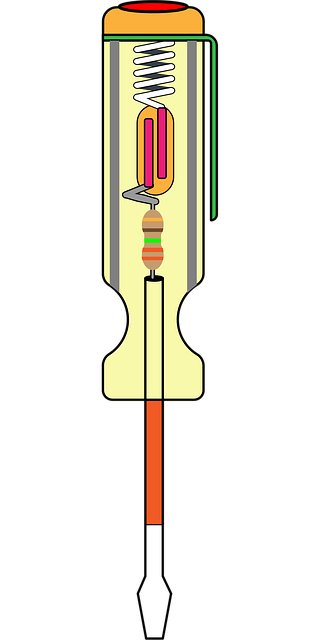Internal linking, a powerful SEO strategy, enhances user experience and website visibility by connecting relevant pages using descriptive keywords as anchor texts. Utilizing an optimize anchor text tool, sites can identify relevant keywords, ensuring links are natural and contextually relevant. This practice is crucial for content-rich websites, improving page authority and rankings. By avoiding generic phrases and focusing on accurate representation, internal linking signals search engines about content relevance, preventing keyword stuffing. Specialized tools track link performance, providing insights to refine optimize anchor text strategy and improve overall SEO.
Looking to boost your content-heavy site’s SEO? Internal linking is a powerful strategy that can drive traffic and enhance user experience. This comprehensive guide teaches you how to implement SEO internal linking effectively. We’ll explore key aspects like understanding internal linking’s role, optimizing anchor text with tools, choosing relevant keywords, strategic placement, best practices, and measuring success through performance tracking. Get ready to revolutionize your site’s visibility!
- Understanding Internal Linking: The Cornerstone of SEO
- The Role of Optimized Anchor Text in Internal Links
- Choosing the Right Keywords for Effective Anchor Text
- Implementing Internal Links Strategically on Content-Heavy Sites
- Best Practices for Creating Engaging and Optimized Internal Links
- Measuring Success: Tracking Internal Link Performance with Tools
Understanding Internal Linking: The Cornerstone of SEO

Internal linking is a powerful SEO strategy that often gets overlooked. It involves creating strategic links between pages on your website to enhance user experience and boost search engine visibility. By connecting relevant content, you guide users and search engines through your site, ensuring information is easily accessible. This practice is especially crucial for content-heavy sites, where a well-structured internal link profile can significantly improve page authority and rankings.
When implementing an optimal anchor text strategy, focus on using descriptive and contextually relevant keywords as link anchors. An optimize anchor text tool can assist in identifying the best phrases to use, ensuring your links are both natural and beneficial for SEO. Following tips include keeping anchor texts diverse, varying them to match the content being linked, and prioritizing keyword-rich anchors for targeted pages.
The Role of Optimized Anchor Text in Internal Links

The choice of words when creating internal links is a crucial aspect of SEO often overlooked. One of the key elements in this strategy is the optimize anchor text tool—it plays a pivotal role in guiding search engines and users to relevant content while enhancing keyword optimization. By using descriptive and contextually relevant anchor texts, you provide valuable clues about the destination page’s content, improving both user experience and search engine understanding.
An optimize anchor text tutorial or SEO best practices suggest keeping anchor texts natural and varying them to avoid over-optimization. This means using specific keywords when linking to a page that discusses those terms, but also incorporating generic phrases like “learn more” or “read our guide.” Such diversity in anchor text optimization ensures your internal linking strategy remains effective and avoids any potential penalties from search engines.
Choosing the Right Keywords for Effective Anchor Text

Selecting the right keywords for your anchor text is a crucial step in effective internal linking. An anchor text tool can help identify relevant keywords that balance readability and SEO. Instead of generic phrases like “click here,” use specific, descriptive terms that accurately reflect the linked content’s focus. For instance, if you’re linking to a blog post about “SEO best practices,” use anchor text like “learn SEO best practices” or “discover advanced SEO techniques.” This approach not only improves user experience but also signals search engines about the relevance of your internal links.
When optimizing anchor text, consider both the source and target pages’ topics. Ensure the keywords align with the content’s theme to maintain a natural flow. Avoid keyword stuffing by using these terms thoughtfully throughout your link text. Remember, an optimize anchor text tutorial or guide should always prioritize clear communication over SEO optimization, ensuring that your internal links remain helpful and relevant for your audience.
Implementing Internal Links Strategically on Content-Heavy Sites

Implementing internal links strategically is paramount for content-heavy sites aiming to boost their SEO. It involves weaving relevant, contextual links throughout your content, guiding users and search engines alike to related resources. This strategy not only enhances user experience by providing valuable navigation but also signals to search algorithms that your site is a comprehensive resource on its topic.
When optimizing anchor text with an eye towards SEO, choose descriptive phrases that accurately represent the linked content’s purpose. Avoid generic terms like “click here” and instead opt for concise, keyword-rich anchors that both describe the target page and align with the surrounding context. Tools dedicated to optimizing anchor text can be invaluable in this process, suggesting variations and ensuring your internal links are both effective and search engine-friendly.
Best Practices for Creating Engaging and Optimized Internal Links

When creating internal links, it’s essential to focus on optimize anchor text tutorial and optimize anchor text SEO. Use descriptive, contextually relevant keywords that accurately represent the linked page’s content. Avoid generic phrases like “click here” or “read more.” An optimize anchor text tool can assist in identifying the best keywords for each link, ensuring they contribute to your overall SEO strategy.
Consider the user experience and maintain a natural flow within your content. Internal links should guide readers seamlessly through your site’s relevant information. Optimize anchor text optimization by strategically placing links where they add value, support important concepts, or provide further insights related to the surrounding text. This not only improves navigation but also signals search engines about the topic relevance of your pages.
Measuring Success: Tracking Internal Link Performance with Tools

Measuring success is a crucial step in any SEO strategy, and tracking internal link performance is no exception. Using specialized tools designed to analyze internal links, such as an optimize anchor text tool, allows content creators and marketers to gain valuable insights into how their site’s users are interacting with internal links. These tools provide data on click-through rates (CTR), time spent on pages, bounce rates, and more, enabling them to identify high-performing links that drive traffic and engagement.
By understanding which internal link strategies are resonating with the audience, you can optimize anchor text tutorial effectively and refine your overall SEO approach. For instance, if a particular set of keywords or anchor text types consistently leads to higher performance metrics, incorporating more of those into your optimize anchor text strategy can help enhance search engine visibility. This data-driven approach ensures that your internal linking is not just comprehensive but also optimized for maximum impact.
